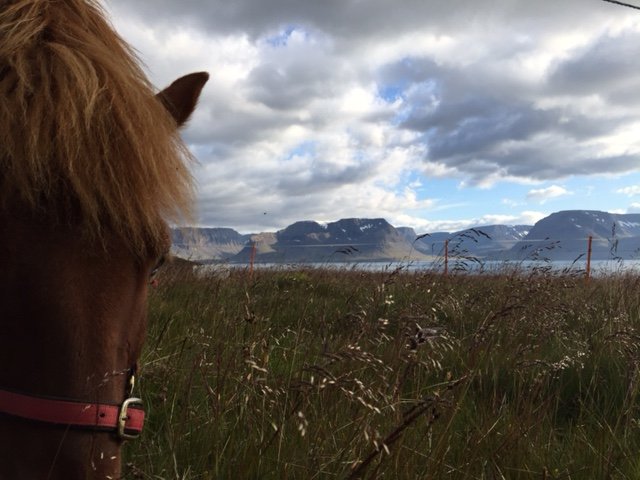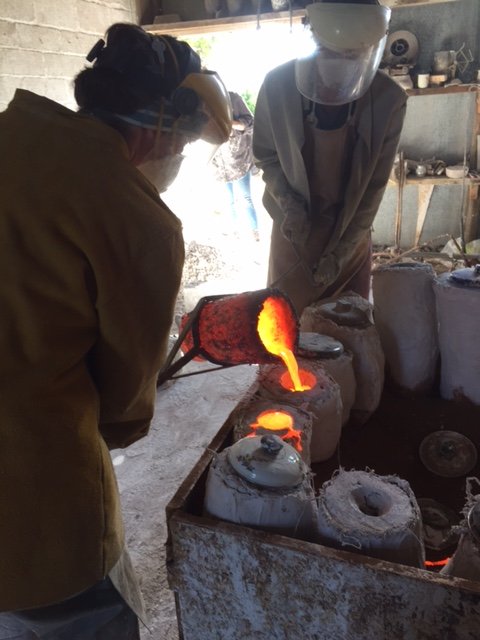Q&A Harrie Fasher
We chat to Harrie Fasher, recipient of the 2015 Windmill Trust Scholarship for Regional NSW Artists.
We chat to Harrie Fasher, recipient of the 2015 Windmill Trust Scholarship for Regional NSW Artists.

Photo: Harrie Fasher
How did the Windmill Trust Scholarship assist you in furthering your practice?
The Windmill Trust Scholarship contributed to an international residency and mentorship program I undertook in Iceland and across the UK. Whilst undertaking this program I learnt new skills that built on my existing strengths, worked within foreign landscapes and explored how that change in landscape and surrounds would influence my work, as well as spending valuable time visiting and working alongside practicing artists. Invigorated and inspired through my experiences, I returned to my Australian studio with a renewed sense of possibility.
Through writing my application for the scholarship, I was able to clarify in my mind and define the direction of my creative journey I wanted to undertake. Being named as the trust’s recipient also instilled confidence in my studio practice and enabled me to truly envisage future potential and direction in my works.
Can you tell us about your residency experiences in the UK and Iceland and the skills you learnt?
The residency had two distinct parts; a walking residency in the wilds of Iceland, and a mentorship with UK bronze artist Laurence Edwards.
Iceland provided space. Space to think, to move, to dream and explore. The landscape instilled me with a sense of possibility and freedom. I returned with seven sketchbooks full of documented experiences, feelings and sketches I could refer to. The pages are filled with passing landscape studies, poetry and prose. The creative exercise I employed, “walking and drawing”, relieved any need for a result of one particular work as an outcome, but rather a documented piece, exploring my time. The books demonstrate the active nature of being within a landscape, and the madness of walking with ten crazy artists!
I returned to the UK to work alongside Laurence Edwards and his assistants, furthering my knowledge of bronze casting and the first hand experience with varying demands of a professional artist within that medium at that location. This relationship with Laurence has been developed over a number of years and demonstrates the advantages of actively maintaining creative connections both locally, regionally and internationally. Skills acquired include all aspects of ludo casting; alongside managerial logistics of critically developing sculptures, production of bronzes and people skills, including liaising with staff, gallery and clients. All very valuable experiences and learnings for me to “take home”.

Image: Butley Mills Studio, UK. Photo: Harrie Fasher

Photo: Harrie Fasher
You're based in Oberon, What are the advantages and perspectives which Oberon brings to your practice?
Living and working in Oberon provides me with space; both physical and mental. The physical space is critical to the construction of large scale sculptures, and to the development of the creative welding programs I run in regional areas.
Living within a small rural community generates a sense of connection and collaboration with the immediate regional demographic, and that of the wider rural regional community. Both individuals and businesses across the Central Western districts now follow my progress, and contribute to the logistics of large-scale sculpture transport and installation. They also have a sense of “ownership” of the creative workshops I have developed, eagerly developing the presence of visual arts within the town and rural community’s culture.
What are the challenges for artists working in regional areas?The primary challenge of regional artists is distance. Almost equally challenging is our lack of connection to technology. We travel many kilometers gathering materials and exhibiting finished work. Whilst the upside of distance is it creates space to focus on your own practice; it also makes it difficult to collaborate with other artists, develop new skills and engage with urban curators. It would be good if this distance was compensated with efficient internet access, this however is not often the case!
This is primarily a good example of the challenges rural communities face running businesses everyday. I share the challenge with my community and that of rural regional NSW and broader regional areas of Australia. The lack of technological infrastructure is a challenge for all of us. There is so much potential through the development of technology and it is constantly moving and changing the way regional and urban businesses operate. I feel that as a regional artist, I am disadvantaged at times through the lack of services provided to regional area’s, but I persist in operating out of rural regional NSW as it gives me a richness and depth to my work that would otherwise not be available to me through my immediate landscape and surrounding experiences of “living regionally”. It’s a balancing act, walking a tight rope of opportunity.
What advice would you pass onto artists applying this year?
Stay committed and flexible.
Demonstrate commitment to your dream; see out opportunities.
Remain flexible, unattached to expectations, as the journey of a creative moves in unexpected directions.
Applications for the 2016 Windmill Trust Scholarship for Regional NSW artists close on Saturday 28 May. Details here.